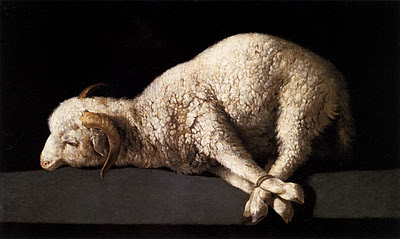 Romans 3:24-25 (NASB)
Romans 3:24-25 (NASB)
Being justified as a gift by His grace through the redemption which is in Christ Jesus; whom God displayed publicly as a propitiation in His blood through faith. This was to demonstrate His righteousness, because in the forbearance of God He passed over the sins previously committed…
In an essay on the atonement in Romans 3:21-26 (in Hill & James (eds.), The Glory of the Atonement, 119-139), D. A. Carson argues on exegetical grounds for a penal substitutionary view of the atonement grounded in the justice of God. His arguments are carefully articulated and appropriately nuanced, as for example, in his acknowledgement that while ἱλαστήριον (hilastērion) is rightly understood to include the notion of propitiation, it is “simultaneously true that sin is expiated, indeed must be expiated” (130).
To my mind, Carson’s treatment of the text in its larger context is convincing. Carson rightly insists that interpretation of this key passage must be seen in the larger narrative of what has preceded it from 1:18 – 3:20, that is, the story of divine wrath on account of human sin and guilt. Nor is divine wrath antithetical to divine love, but both divine perfections are unified, for God “always acts according to the perfection of his own character” (133). God’s love is holy love, and his holiness is loving holiness. In this sense, the divine wrath is God’s personal response—the response of the holy and loving God—to human sinfulness.
The part of the essay I enjoyed most concerned his comment on verses 24-25, in which he notes that Paul uses three specific images to explain the work of Christ, and that these three images correspond to the three images of sin detailed in 1:18 – 3:20. Further, Carson insists that in Paul’s mind, these three images are interlocked rather than parallel. That is, these are not three options amongst which we can choose when discussing Christ’s saving work. We cannot simply pick the particular metaphor that appeals to us: the three belong together (129).
The first metaphor is that of justification, deriving from the imagery of the law court and addresses human guilt as a consequence of sin. The second metaphor is redemption, deriving from the slave market and addressing the reality that sin not only renders humanity judicially guilty before God, but also enslaves it. The third metaphor, drawn from the religious or cultic world, is propitiation. This metaphor addresses the divine wrath which has been aroused on account of human sinfulness.
These three metaphors also indicate something of the internal dynamic at work in the atonement. That we are justified “as a gift by his grace” shows the origin of our salvation in the saving, gracious will of God. The historical basis of this salvation is the redemption accomplished in the life of Jesus Christ. The means by which this redemption is effective is the propitiation:
The redemption (ἀπολύτρωσις) that is effected is accomplished by the payment of a price or a ransom (λύτρον). … In the passage at hand, the price in view is Jesus’ death, which frees us from death that is nothing other than sin’s penalty (128-129).
God is both the subject and the object of this propitiation: in his love toward humanity, God sets forth Christ as the propitiation, and likewise receives the self-offering of Christ which turns aside his wrath. That God is the subject of the propitiation distinguishes this event from all human-originated propitiations. That is, the offering of Christ is not an offering made by humanity to appease a capricious or angry deity. Rather, God propitiates himself in Christ. Although Carson does not acknowledge explicitly the trinitarian dimensions of this sacrifice, his thought nonetheless runs in this direction (131).
This redemptive propitiation is “in his blood,” which for Carson is simply Paul’s way of speaking of Christ’s sacrificial death as the “means by which God’s wrath is propitiated” (136). The mention of Christ’s blood is to indicate the nature of his death as a sacrifice.
Carson’s final comment on these verses explores the purpose of the propitiation as expressed in verses 25-26. Here Carson finds the deepest mystery and ground of the atonement: God set forth and publicly displayed Christ as a propitiation not simply for the justification of humanity in the face of their sin and guilt, but also as the justification of God himself (138). Carson acknowledges that this interpretation requires a different nuance of the term “God’s righteousness” in this verse than that found in verse 21. In the earlier verse it refers to God’s activity of justifying his sinful people; “here it refers to something intrinsic to God’s character” (138). Paul’s words in verse 26 emphasise this contention: “for the demonstration, I say, of His righteousness at the present time, so that He would be just and the justifier of the one who has faith in Jesus.”
“That he would be just.” The cross is the ultimate expression not only of God’s grace and love, but also of his righteousness and justice (the same Greek word is used for both these terms). In and through the blood of Christ—his sacrificial death—God has both satisfied his own righteousness and saved, forgiven and cleansed his sinful people.